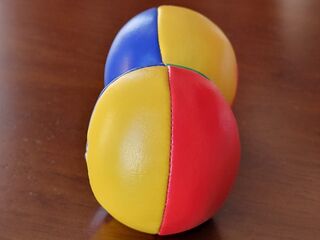Child Development
Motion May Be Vision's Greatest Teacher
How can the newly-sighted teach themselves to see?
Posted February 15, 2022 Reviewed by Abigail Fagan
Key points
- People who gain sight later in life have a different experience learning to see than those born with sight.
- People can learn to see by moving and by watching other objects move.
- Movement is key to developing vision after being blind.
When 15-year-old Liam McCoy, practically blind from birth, received surgeries that gave him sight, his first views were nothing like yours or mine. While we see people and objects arranged in three-dimensional space, he saw a hodgepodge of lines and patches of colors on one flat plane. He wrote, “I think of a line as the difference between two colors, the point where two colors meet. These lines make up everything I see...”
How was Liam going to learn to see? Some in the biomedical community would say that he could not, that vision must be learned in the first years of life. Indeed, most cases of sight recovery past childhood have ended sadly, with the patients rejecting their new sight. Had Liam taken a passive approach to his new sense, he may have suffered the same outcome. Instead, he paid great attention to the way he took in the world, scrutinized his perceptual habits, and then optimized what worked best.
Right from the start, Liam could play catch. “It is easy for me visually,” Liam wrote, “no anxiety, no calculations, just seeing.” At first blush, this seems surprising. Wouldn’t it be harder to see and then grab a ball that is moving than to take your time and see an object that is standing still? But take a look at this color photo.

Most of us instantly see two multicolored balls, one behind the other. However, an adult who is seeing for the first time, may not see two balls. Instead, each colored area of each ball may appear as a separate object. This confusion is largely resolved if one of the balls starts moving. Now all of its colored parts, move together, as one piece. The ball in motion stands out from its static background making it easy to see and recognize.
For Liam, motion led to some surprises and epiphanies. He discovered that balls (and other things) loom larger as they approach. He could identify objects more readily if he walked around them and watched how their appearance transformed smoothly with his changing point of view. As he swayed back and forth, objects sorted themselves out in depth. Nearer objects appeared to move faster in his visual field and in the opposite direction to his motion while further objects appeared to move more slowly and in the direction of his motion. As Liam moved through space or attempted to follow and catch a moving ball, he was capitalizing on a great way to enhance his vision.
We are so accustomed to testing our eyesight by looking at flat, static eye charts that we forget that our vision evolved in a dynamic, three-dimensional world. By moving through the world and interacting with moving objects, Liam developed his vision. Indeed, motion may be vision’s greatest teacher.


